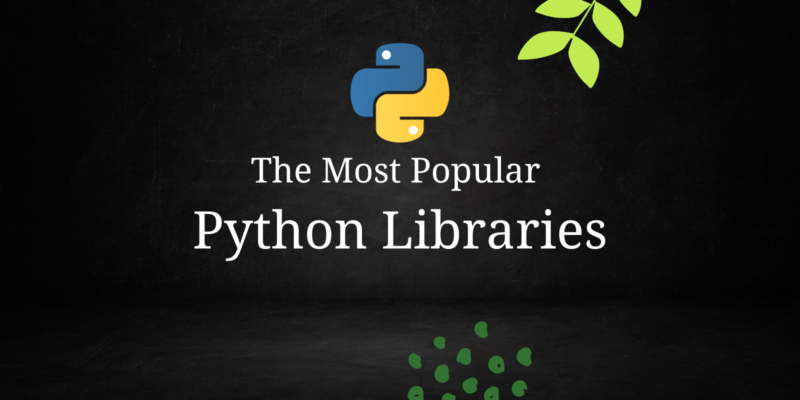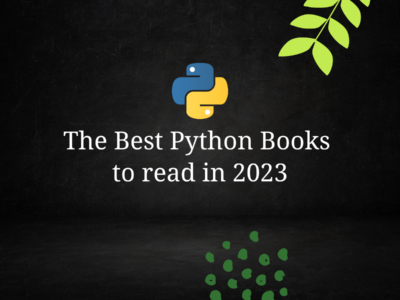
The Most Popular Python Libraries
Python is a versatile programming language with a rich ecosystem of libraries that cater to various domains such as data science, web development, machine learning, and more. This BitsToGigs article explores some of the most popular Python libraries across different categories a software engineer must know.
Data Science Libraries:
NumPy:
NumPy is a fundamental package for scientific computing in Python. It provides support for large, multi-dimensional arrays and matrices, along with mathematical functions to operate on these arrays.
Official Link: NumPy Official Website
Uses: NumPy is widely used in numerical and scientific computing tasks such as linear algebra operations, statistical analysis, and mathematical calculations.
Pandas:
Pandas is a powerful data manipulation and analysis library. It offers data structures like DataFrame for efficient data manipulation with integrated indexing.
Official Link: Pandas Official Website
Uses: Pandas is commonly used for data cleaning, exploration, and analysis. It is especially useful for working with structured data in tables.
Matplotlib and Seaborn:
Matplotlib is a 2D plotting library, and Seaborn is built on top of Matplotlib, providing a high-level interface for drawing attractive and informative statistical graphics.
Official Links: Matplotlib Official Website, Seaborn Official Website
Uses: Matplotlib and Seaborn are used for creating static, animated, and interactive visualizations in data analysis and presentation.
SciPy:
SciPy builds on NumPy and provides additional functionality for scientific and technical computing. It includes modules for optimization, integration, interpolation, eigenvalue problems, and more.
Official Link: SciPy Official Website
Uses: SciPy is used for a wide range of scientific and engineering applications, including signal processing, optimization, and numerical integration.
Machine Learning Libraries:
Scikit-learn:
Scikit-learn is a simple and efficient tool for data analysis and modeling. It includes various machine learning algorithms for classification, regression, clustering, and dimensionality reduction.
Official Link: Scikit-learn Official Website
Uses: Scikit-learn is commonly used for building and evaluating machine learning models in tasks such as classification, regression, and clustering.
TensorFlow and PyTorch:
TensorFlow and PyTorch are deep learning libraries that provide tools for building and training neural networks. TensorFlow is developed by Google, while PyTorch is maintained by Facebook.
Official Links: TensorFlow Official Website, PyTorch Official Website
Uses: TensorFlow and PyTorch are widely used for developing deep learning models, including tasks such as image recognition, natural language processing, and reinforcement learning.
Keras:
Keras is a high-level neural networks API that can run on top of TensorFlow, Theano, or Microsoft Cognitive Toolkit. It allows for easy and fast prototyping.
Official Link: Keras Official Website
Uses: Keras simplifies the process of building and training neural networks and is often used for rapid development of deep learning models.
Web Development Libraries:
Django:
Django is a high-level web framework that encourages rapid development and clean, pragmatic design.
Official Link: Django Official Website
Uses: Django is commonly used for building robust, scalable web applications with features such as authentication, URL routing, and an ORM for database interaction.
Flask:
Flask is a microframework that is lightweight and modular, making it easy to get started.
Official Link: Flask Official Website
Uses: Flask is well-suited for small to medium-sized web applications and APIs, providing flexibility and simplicity in development.
Requests:
The Requests library simplifies HTTP requests in Python, making it easy to interact with web services.
Official Link: Requests Official Documentation
Uses: Requests is commonly used for making HTTP requests, handling response data, and interacting with RESTful APIs.
Data Visualization Libraries:
Plotly:
Plotly is an interactive, open-source plotting library that supports a wide range of chart types and can be used to create interactive dashboards.
Official Link: Plotly Official Website
Uses: Plotly is used for creating interactive and visually appealing plots and charts in data analysis and reporting.
Bokeh:
Bokeh is a Python interactive visualization library that targets modern web browsers for presentation.
Official Link: Bokeh Official Website
Uses: Bokeh is commonly used for creating interactive and real-time streaming plots for data visualization.
Natural Language Processing Libraries:
NLTK (Natural Language Toolkit):
NLTK is a leading platform for building Python programs to work with human language.
Official Link: NLTK Official Website
Uses: NLTK is used for tasks such as text processing, tokenization, stemming, and part-of-speech tagging in natural language processing applications.
Data Serialization and Storage Libraries:
pickle:
The pickle module in Python is used for serializing and deserializing Python objects. It enables the conversion of Python objects into a byte stream and vice versa.
Official Documentation: pickle – Python Standard Library
Uses: pickle is commonly used for saving and loading Python objects, especially in scenarios where data needs to be persisted.
h5py:
h5py is a Python interface to the Hierarchical Data Format (HDF5). It allows you to store and manipulate large datasets of numerical data efficiently.
Official Documentation: h5py Documentation
Uses: h5py is widely used for handling large-scale scientific data, such as datasets generated in machine learning and simulations.
Web Scraping Libraries:
Beautiful Soup:
Beautiful Soup is a library for pulling data out of HTML and XML files. It provides Pythonic idioms for iterating, searching, and modifying the parse tree.
Official Documentation: Beautiful Soup Documentation
Uses: Beautiful Soup is commonly used in web scraping projects to extract and parse data from HTML and XML documents.
Requests-HTML:
Requests-HTML is an HTML parsing library that is built on top of the Requests library. It simplifies the process of extracting data from HTML pages.
GitHub Repository: Requests-HTML on GitHub
Uses: Requests-HTML is useful for web scraping tasks where you need to interact with and extract data from HTML pages.
Testing Libraries:
unittest:
unittest is the built-in testing framework in Python. It supports test automation, sharing of setup and shutdown code for tests, aggregation of tests into collections, and more.
Official Documentation: unittest – Python Standard Library
Uses: unittest is commonly used for writing and running unit tests to ensure the correctness of Python code.
pytest:
pytest is a third-party testing framework that provides more features and a simpler syntax compared to unittest. It is widely adopted in the Python testing community.
Official Documentation: pytest Documentation
Uses: pytest is used for writing concise and scalable test suites for Python code.
Image Processing Libraries:
Pillow (PIL Fork):
Pillow is a powerful image processing library that extends the capabilities of the Python Imaging Library (PIL). It provides easy-to-use methods for opening, manipulating, and saving various image file formats.
Official Documentation: Pillow Documentation
Uses: Pillow is commonly used for image manipulation, resizing, cropping, and applying various filters to images.
OpenCV:
OpenCV (Open Source Computer Vision Library) is a library focused on computer vision and image processing. It provides tools for image and video analysis, as well as machine learning.
Official Documentation: OpenCV Documentation
Uses: OpenCV is widely used for tasks such as image recognition, object detection, and video analysis in computer vision applications.
Cryptography Libraries:
cryptography:
The cryptography library provides cryptographic recipes and primitives to Python developers. It aims to be easy to use and secure.
Official Documentation: cryptography Documentation
Uses: cryptography is used for implementing secure communication, encryption, and cryptographic protocols in Python applications.
PyCryptodome:
PyCryptodome is a self-contained Python package of low-level cryptographic primitives. It is a fork of the original PyCrypto library.
GitHub Repository: PyCryptodome on GitHub
Uses: PyCryptodome is used for tasks such as encryption, decryption, digital signatures, and hash functions in Python applications.
These Python libraries cover a wide range of domains, providing developers with powerful tools for various tasks, from data science and machine learning to web development, testing, and cryptography. Explore these libraries based on your specific needs to enhance your Python development experience.
In the last article we had discussed The Most Popular Books on Artificial Intelligence.
Happy Learning!
Subscribe to the BitsToGigs Newsletter




